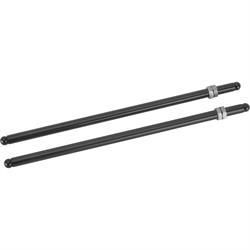Engine Building - Valvetrain Tips
With today’s valvetrain technology it seems like there are more valve spring choices than ever before. And with all the options available it can quickly become confusing. However there are a few basics that can help when it’s time to make an upgrade. Your valve springs should always be matched to the camshaft as closely as possible. A spring pressure that is too weak allows the valve to hang open and, worst case scenario, it could hit the piston. If the valves begin to float it will starve the engine of power and lead to excessive wear on the valves. After time this can reduce spring pressure, which can cause keepers to fall out and drop the valve into the cylinder. Too high of valve spring pressure can lead to abnormally fast valvetrain wear. Always check with the cam manufacturer and follow their recommended valve spring choice and installation specs.
Valvetrain geometry
If you’re installing a new camshaft and you’re also purchasing new valvetrain components, the last thing you should buy are the pushrods. Unless the engine is completely stock, it’s almost impossible to predict what length pushrods you’ll need. The block and head deck height, rocker arms, lifter design, valve stem length, and cam profile will all affect the pushrod length you’ll need. Instead, invest in a pushrod length checking tool. They are simple to use and sold in a variety of lengths.
Rocker Arm Ratios
Every little bit counts when it comes to performance and an excellent way to squeeze some extra power out of your engine is by increasing your rocker arm ratio. For example, moving from a 1.5 ratio rocker arm to a 1.6 would effectively increase the overall valve lift. Since valve lift is the measure of the cam lobe lift multiplied by the rocker arm ratio, we can calculate what the valve lift will change to. Let’s say we have a cam lift of .319 x 1.5 which gives us .479-inch valve lift. If you were to upgrade to a 1.6 ratio rocker arm the valves would now open to .510-inches, which gives you an added .031-inches of extra lift. Essentially the more air and fuel you can move through your combustion chamber the more power you gain. But before you make the upgrade, be sure to check what your piston to valve clearance is and make sure rest of your valvetrain components can handle the additional ratio.



